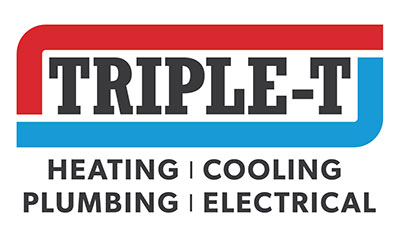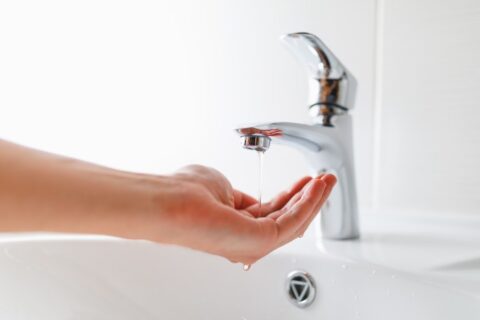How to Handle Leaky Pipes in Your Home
You expect your plumbing to flow smoothly so you can wash dishes, do laundry, take showers, and brush your teeth. In fact, you probably take your pipes and fixtures for granted— that is, until they develop a leak. Learn how to spot this plumbing problem and what to do the next time a pipe springs a leak.
What Causes Leaky Pipes?
You might be wondering—why do pipes leak in the first place? Here are some common culprits:
- Settling foundation: Small shifts in the soil beneath your home can cause buried pipes to disconnect, crack, or rupture.
- High water pressure: Anything higher than 80 pounds per square inch (psi) can cause excessive wear and tear on your pipes, causing the joints to loosen or burst.
- Tree roots: Invasive tree roots are a common plumbing problem. They are drawn toward pinhole leaks in the sewer line and burrow themselves into the pipe over the course of several years. The resulting clogged, leaky pipe can cause major headaches.
- Corrosion: Older Utah County homes may feature galvanized steel piping, which is susceptible to rust. If damaged pipes aren’t replaced, they may eventually rust through.
- Cold temperatures: Pipes are liable to freeze and burst if they are exposed to frigid temperatures. The most vulnerable pipes are those running along exterior walls and through unconditioned spaces.
- Loose fittings: Slight vibrations caused by water running through the pipes may cause fittings to loosen over time, eventually causing a leak.
Signs of a Pipe Leak
Not all leaky pipes are easy to spot. After all, a majority of your plumbing runs behind the walls and under the floors, where it’s hidden from sight. That’s why you should know how to recognize the signs of a pipe leak, including:
- Standing water: Make a habit of frequently checking under-sink cabinets, the floor around the toilet, and areas near other plumbing fixtures for standing water. This is often the first indication of a leaky pipe.
- Mold and mildew growth: Standing water gives mold and mildew the moisture they need to start growing. Mold may appear on any cellulose-based building material, including wood cabinets, wall studs, drywall, ceiling tiles, carpet, subfloor, and more.
- Musty odor: Mold doesn’t always grow where you can see it. If a colony forms behind the wall or under the floor, you may notice a perpetual musty odor that lingers even after deep-cleaning the room.
- Wood rot: Water and wood don’t get along. Leaky under-sink plumbing could ruin your cabinetry by causing it to rot.
- Drywall, paint, and wallpaper damage: Watch out for damp, stained, or warped walls and ceilings. Paint may bubble, and wallpaper may peel away if a plumbing leak is causing damage behind the wall.
- Soggy lawn: Plumbing leaks aren’t limited to the inside of your home. Pipes buried underground can also crack and separate, leaking water or sewage onto your property. Keep an eye out for soggy spots, foul odors, or patches of extra-green grass.
- Rising water usage: Here’s a simple test to help you track down hidden plumbing leaks. First, go outside and read your water meter. Then, refrain from using any plumbing fixtures for two hours. Recheck the meter, and if the reading has changed, this means you have a hidden leak somewhere.
Minimize Water Damage from a Plumbing Leak
As soon as you discover a leak, stopping it should be your first priority. Here’s what to do:
- Shut off the water: The goal is to stop the flow of water toward the leaky pipe. If the toilet, faucet, washing machine, or water heater is leaking, you should spot a valve nearby that you can turn to shut off the water. If the leak is located elsewhere, you’ll need to turn the main water shut-off valve. This valve should be located where the water line enters the house (near the water meter).
- Drain the damaged line: Turn on a nearby faucet to remove any standing water from the pipe. Depending on your plumbing layout, you may need to force the water out of the pipe manually with an air compressor.
- Soak up the water: Remove as much standing water as possible with towels and rags. Then, set up fans and open windows, weather permitting, to increase air circulation. It’s important to dry the area as quickly as possible to minimize water damage.
- Call a plumber: Once the leak is stabilized and no longer threatening to damage your home, the final step is to hire a plumber to repair or replace the pipe. It’s best to leave this task to a professional, especially if the leak is located behind a wall and is therefore inaccessible without cutting through the drywall.
What About Leaky Faucets and Showerheads?
Just because the water is dripping into a sink, bathtub, or shower base, don’t assume you have nothing to worry about. Here are three reasons to fix a leaky faucet or showerhead as soon as possible:
- The constant drip, drip, drip of a leaky fixture can drive you crazy.
- The constant moisture can lead to mold growth in the drain, causing unpleasant smells and reducing air quality.
- The leak can waste a significant amount of water and raise your utility bills.
Schedule Plumbing Services in Utah County, UT
If you’ve spotted a plumbing leak or suspect one you can’t find, you need a qualified plumber to remedy the problem. Triple T Heating, Cooling & Plumbing is the right choice for the job! From severe slab leaks to slow-dripping faucets, no plumbing leak is too large or too small for us to handle.
To help keep your pipes flowing smoothly and prevent future leaks, we recommend signing up for our plumbing maintenance program. Rest assured that everything we do is backed by a 100% satisfaction guarantee! For help fixing a leaky pipe in your Utah County home, please contact Triple T today at 801-790-0460.


